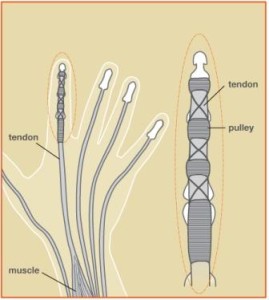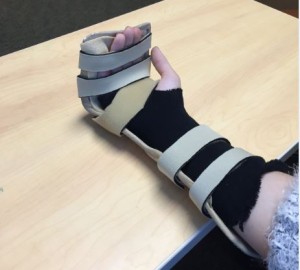A flexor tendon laceration can occur with cuts or injuries to the palm side of the wrist, hand, or fingers. These tendons allow a person to flex his or her fingers for grasping, and to make a fist. These muscles start at the elbow and travel all the way to the fingertips as tendons. In the finger, these tendons are held in place by a series of pulleys to maximize their functional motion.
Symptoms of a Flexor Tendon Laceration
You may notice that one or more of your fingers does not bend with the others, or may just seem weak. There are also other important structures that are close to these tendons that may be injured. These include nerves and arteries. A nerve injury can cause numbness in the finger in the area past the laceration.
These injuries do not heal on their own and require timely evaluation. Delaying treatment decreases the likelihood normal function of the hand can be restored.
Treatment for a Flexor Tendon Laceration
Flexor tendon injuries are very serious injuries and require a dedicated team to maximize recovery. This team includes YOU, your doctor, and a hand therapist. Early recognition and evaluation is important. If surgery is required, results are best if this is done in the first 2 weeks after the injury. Again, these injuries will not heal on their own.
After Surgery
Depending on the location of the injury and any associated injuries (nerve, bone, pulleys), the hand and wrist will be immobilized for 4 – 6 weeks. This is to protect the repaired structures. During that time, a hand therapist and I will work closely with you to work on protected motion and activity. It can take several months to regain full function.
Diagrams modified from ASSH (www.assh.org)


